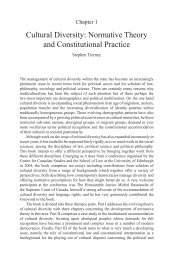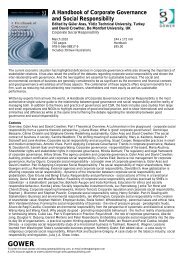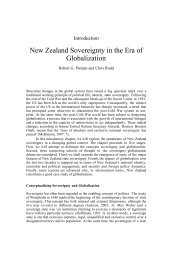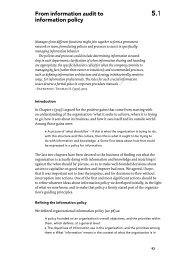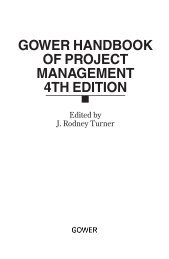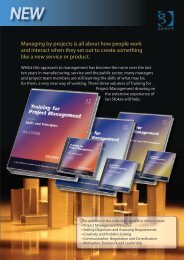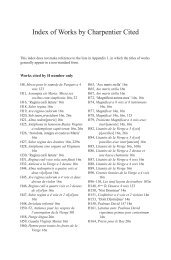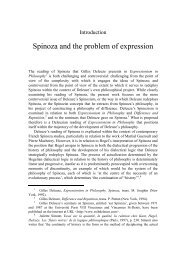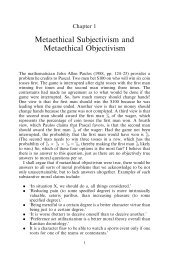The Project Risk Maturity Model
The Project Risk Maturity Model
The Project Risk Maturity Model
Create successful ePaper yourself
Turn your PDF publications into a flip-book with our unique Google optimized e-Paper software.
12 T h e P r o j e c t R i s k M a t u r i t y M o d e l<br />
100%<br />
Level 4<br />
75%<br />
Level 3<br />
50%<br />
Level 2<br />
25%<br />
Level 1<br />
Stakeholders <strong>Risk</strong> <strong>Risk</strong> <strong>Risk</strong> <strong>Project</strong> Culture<br />
Identification Analysis Responses Management<br />
Figure 1.5<br />
<strong>Project</strong> RMM assessment results for <strong>Project</strong> A<br />
An early pass of this analysis suggested a probable schedule slip of 5–15 days. Lessons<br />
learned from this analysis were then used to introduce planning improvements and<br />
additional risk mitigation. Two further passes of this analysis were undertaken, after<br />
which the plan was considered to be sufficiently robust. This was an excellent example of<br />
how a schedule risk analysis should be used; the process enabled the team to rehearse the<br />
project delivery and understand how best to respond to events that could arise. During<br />
a post-project lessons learned exercise, risk management was identified as having been a<br />
major factor that enabled the project to meet its objectives.<br />
Given the success of risk management on <strong>Project</strong> A, one could ask whether or not<br />
the <strong>Project</strong> RMM assessment should have been Level 4 rather than Level 3. <strong>The</strong> answer<br />
is that this is an example of the fact that, sometimes, a Level 3 project risk management<br />
capability is sufficient to achieve an organisation’s objectives. Although <strong>Project</strong> A was<br />
large (approximately £50M), it was not particularly complex. As an internal project, it also<br />
had simple relationships with its stakeholders. Moreover, a project of this type was not<br />
new to the company concerned; it owned similar production plants and the same plant<br />
had been renewed 13 years previously. Finally, there were no incentives for members of<br />
the project team to make biased risk estimates. <strong>The</strong> sponsor had made a shrewd estimate<br />
of where to set objectives that were challenging, yet realistic and the project team knew<br />
that they would be judged by results, not forecasts.<br />
<strong>The</strong> main reason for the risk management process falling short of Level 4 capability<br />
is that it had only a limited effect on the project strategy. For example, the schedule and<br />
cost objectives were set prior to the introduction of risk management. <strong>The</strong>re was also<br />
no risk-based evidence that the project could live within its budget. For the company<br />
that sponsored <strong>Project</strong> A, these were minor issues. On more complex projects or when<br />
estimating bias or when conflicts of interest are potential causes of difficulty, a project<br />
RMM less than Level 4 would be more of a concern.



